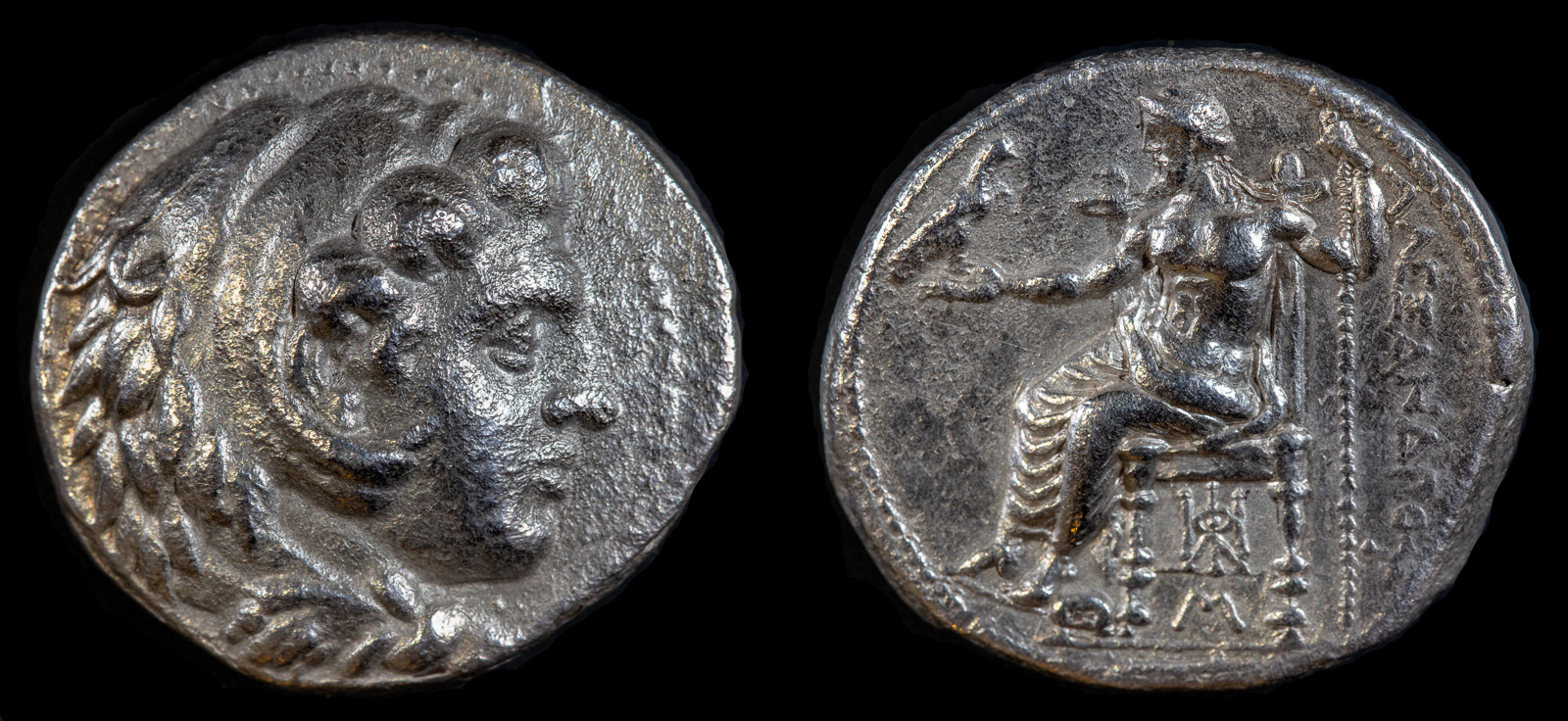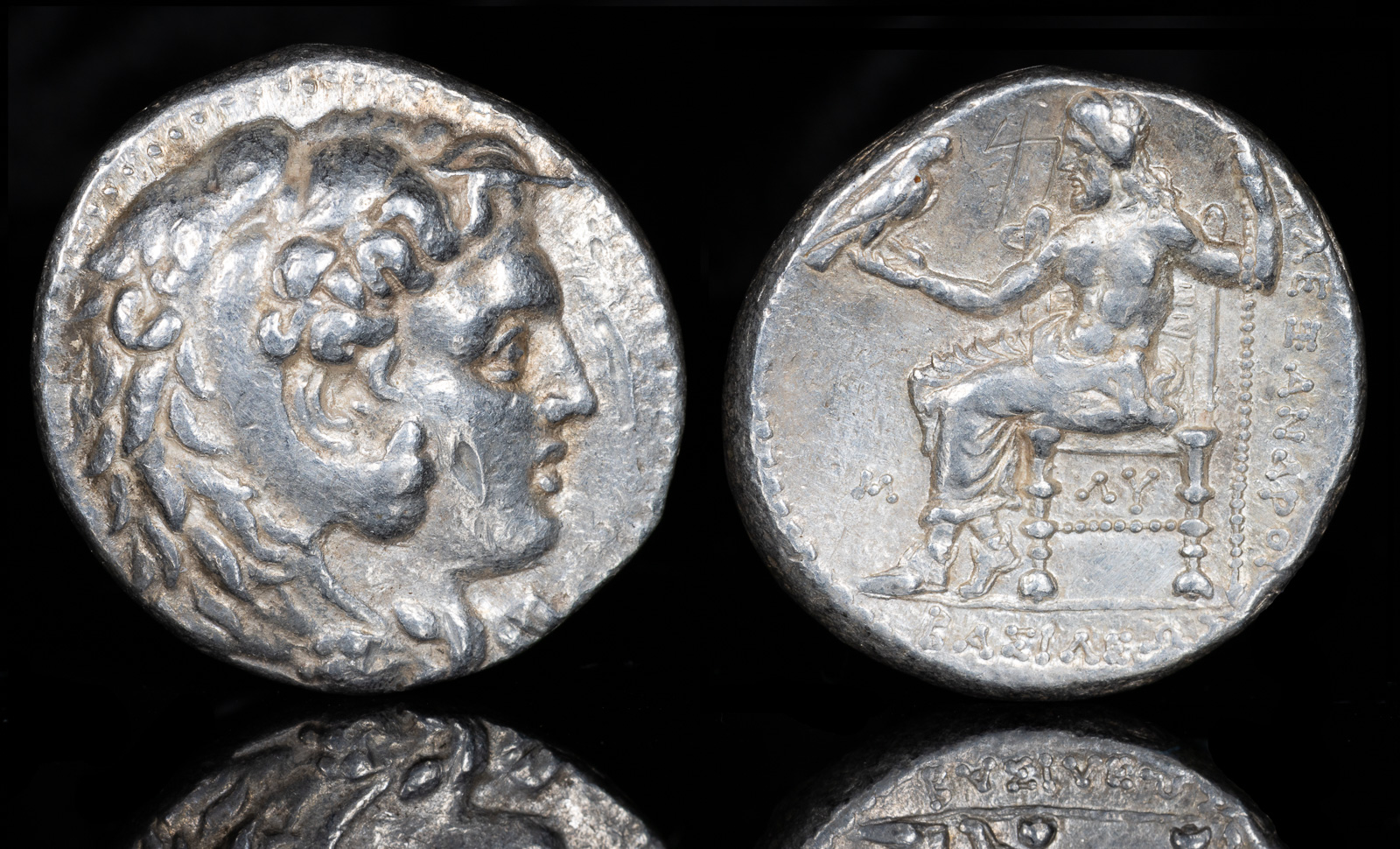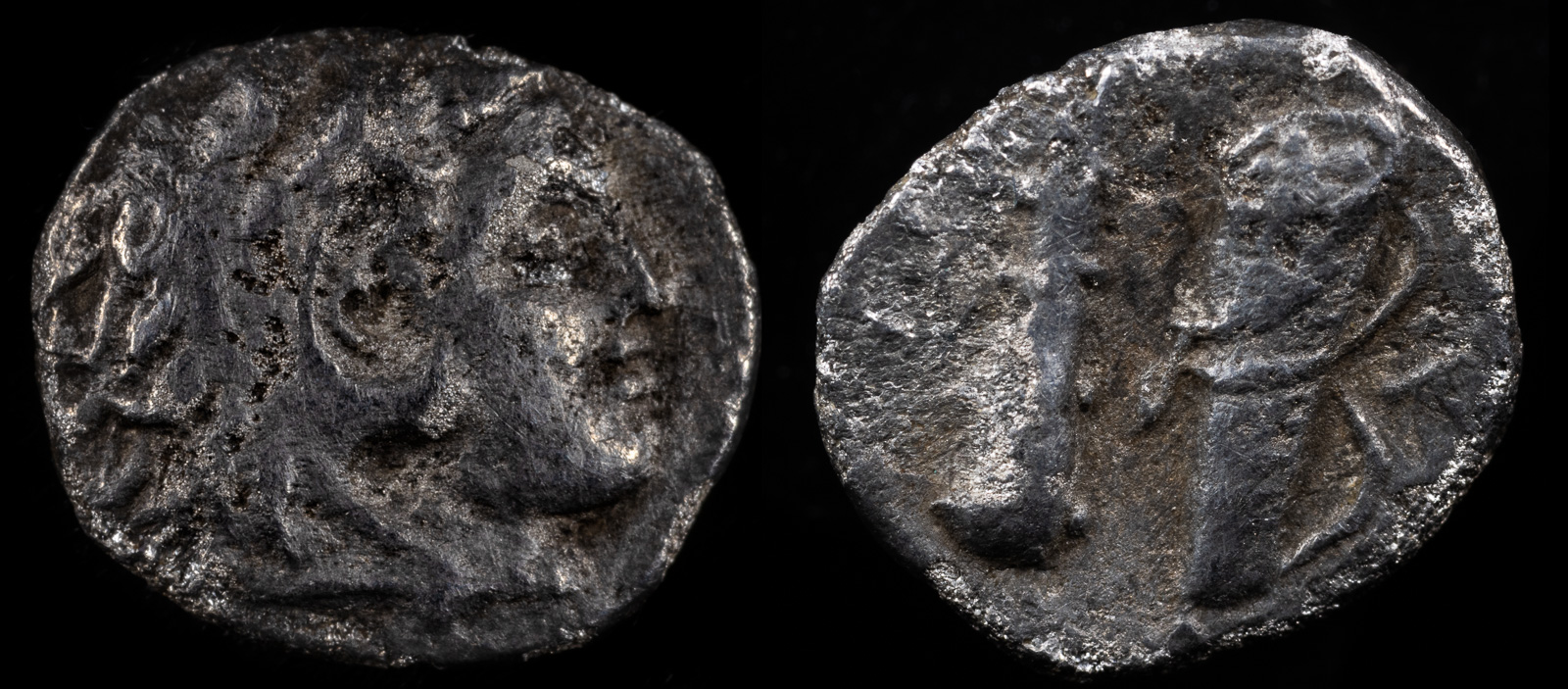
Kingdom of Macedon, Alexander III ‘the Great’
AR Tetradrachm 16.68g, 27mm, 2h
Struck under Stamenes or Archon
Babylon, circa 324/3 BCE
Price 3599; Müller 670.
To properly discuss Babylon would require an entire book. However, by the time Alexander the Great moved to make it his capital, it was already in decline.
Parts of the city that Alexander most certainly saw in his time are visible even without a risky trip to Iraq. Some of the murals from the chief palace are in the Metropolitan Museum of Art, while the Ishtar Gate is displayed in Berlin’s Pergamon Museum.
Unfortunately for Alexander, he didn’t have long to bask in his city after returning from his long foray into India. This coin was minted in 323 BCE in Babylon, which was where and when Alexander died. While it was probably minted before his death, since the mint mark would likely have changed soon after, we don’t really know.
During Alexander’s life, he gave the satrapy of Babylon to Mazaios, who had earlier opposed him under Darius II. When Mazaios died in 328 BCE, the satrapy was given to Stamenes. After Alexander’s death, Archon assumed the satrapy, until Perdikkas appointed Dokimos. Archon refused to give up the post, and he was killed in a battle with Dokimos.

Philip III Arrhidaios AR Tetradrachm.
Struck under Archon, Dokimos, or Seleukos I.
Babylon, circa 323-317 BCE
Head of Herakles to right, wearing lion skin headdress / Zeus Aëtophoros seated to left, holding sceptre; BAΣIΛEΩΣ below, AΛEΞANΔPOY to right, M in left field, ΛY below throne. Price 3692; Müller 1272; Hersh 244. 17.18g, 25mm, 12h.
graffito to rev.
Ex Roma
He kept the satrapy for a short time, because during the Partition of Triparidisos it was given to Seleukos I Nikator. He had all of four years to enjoy the post, because in 317 BCE Antigonos I Monophthalmos chased him out and appointed Aspesias as his own governor.

Alexander III
Babylon mint 317-311 BCE by Peithon son of Agenor
Hemiobol .46g
Head of Heracles right wearing a lion skin
Club, bow and quiver. Monogram to right
Price 3729
In 312 BCE, Seleukos returned by Babylon and retook his satrapy. The city remained under Seleukid control until most of the inhabitants were moved to the new city of Seleukeia in 275 BCE, and Babylon lost its role as an important player in world history.
Foundation of the First Dynasty of Babylon under Sumu-abum, establishing Babylon as a city-state in southern Mesopotamia.
Hammurabi becomes king of Babylon, initiating a period of expansion and codification of laws.
Code of Hammurabi is established in Babylon, one of the earliest and most complete written legal codes.
Hittite King Mursili I sacks Babylon, marking the end of the First Babylonian Dynasty.
Kassite Dynasty ends with Babylon’s conquest by Elam.
Nebuchadnezzar I of Babylon plunders Susa.
Sennacherib, the Assyrian king, destroys Babylon in retaliation for its rebellion.
Babylon revolts under Shamash-shum-ukin against Assyrian control, leading to a brutal siege by Ashurbanipal.
Nabopolassar establishes the Neo-Babylonian Empire and declares independence from Assyria.
Nebuchadnezzar II becomes king of Babylon, overseeing its peak and monumental building projects, including the Ishtar Gate.
Nebuchadnezzar II captures Jerusalem, leading to the Babylonian Captivity of the Jews.
Cyrus the Great of Persia captures Babylon, ending the Neo-Babylonian Empire; the city becomes part of the Achaemenid Empire.
Babylon revolts against Darius I but is subdued by the Persians.
The army of Cyrus the Younger defeats that of Artaxerxes II at the Battle of Cunaxa at Babylon. However, Cyrus the Younger is killed. Orontas participates as the satrap of Armenia.
Alexander the Great enters Babylon after defeating Darius III at the Battle of Gaugamela.
October 21
Mazaios surrenders Babylon to Alexander III and he enters triumphantly. Mazaios is appointed satrap of Babylon.
Kassander sent by Antipater to meet with Alexander III at Babylon in favor of a continued regency.
Kassander returns to Macedonia from Babylon.
Philoxenos brings troops from Caria to Babylon.
May
Menander arrives in Babylon with fresh troops.
June
Alexander IV and Philip III are chosen in Babylon as co-sovereigns.
June 11
Alexander the Great dies in Babylon, sparking the Wars of the Diadochi among his generals. Before dying, he gives his signet ring to Perdikkas.
September
Kynane of Macedon hatches a plan to marry her daughter, Adea Eurydike, to Philip III. She is killed by Alketas, the brother of Perdikkas, in the process, but soldiers are so disgusted at the murder that they escort Adea to Babylon.
October
Adea Eurydike is married to Philip III, most likely in Babylon.
December
Alexander IV is born to Roxana in Babylon.
Partition of Triparadisos. Abydos is given to Arrhidaios. Susa goes to Antigenes. Antipater is left in charge of Macedonia and is entrusted with Alexander IV and Philip III. Asandros is confirmed with Caria. Kleitos the White receives Lydia, replacing Menander. Laomedon is confirmed as satrap of Koele-Syria. Peithon is confirmed in Kophen. Seleukos receives Babylon.
Peithon is appointed by Antigonos Monophthalmos as satrap of Babylon in place of Seleukos.
Antigonos Monophthalmos is received by Seleukos I Nikator in Babylon. When Antigonos demands income from the province, Seleukos flees to Ptolemy I Soter in Egypt.
Seleukos I Nikator gains control of Babylon, founding the Seleukid Empire and beginning Babylon’s decline as a center of power as Seleukos establishes Seleukeia on the Tigris.
Demetrios Poliorketes attempts to take Babylon from Seleukos I Nikator, but is defeated.
The inhabitants of Babylon are moved to Seleukeia on the Tigris.
Antiochos III transports 2000 Jewish families from Babylon to Laodikeia ad Lykon.
The Parthians capture Babylon, further diminishing its prominence as they establish their own empire.
Hyrkanos II has his ears removed and is then led as a captive to Babylon. Antigonos II Mattatias is installed as ruler of Judea.
Roman Emperor Trajan briefly occupies Babylon during his campaign against the Parthian Empire.